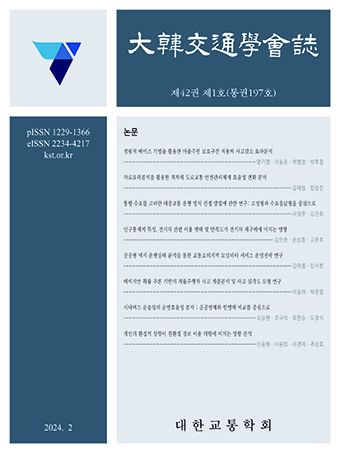Article
Abstract
References
Information
Craft R. H., Preslopsky B. (2009), Driver Distraction and Inattention in the USA Large Truck and National Motor Vehicle Crash Causation Studies, In 1st International Conference on Driver Distraction and Inattention (DDI 2009) Chalmers University of Technology, Sweden SAFER Vehicle and Traffic Safety Centre INRETS-ARCUEIL, France.
- Publisher :Korean Society of Transportation
- Publisher(Ko) :대한교통학회
- Journal Title :Journal of Korean Society of Transportation
- Journal Title(Ko) :대한교통학회지
- Volume : 37
- No :1
- Pages :39-50
- Received Date : 2018-11-07
- Revised Date : 2018-12-26
- Accepted Date : 2019-02-28
- DOI :https://doi.org/10.7470/jkst.2019.37.1.039



 Journal of Korean Society of Transportation
Journal of Korean Society of Transportation







